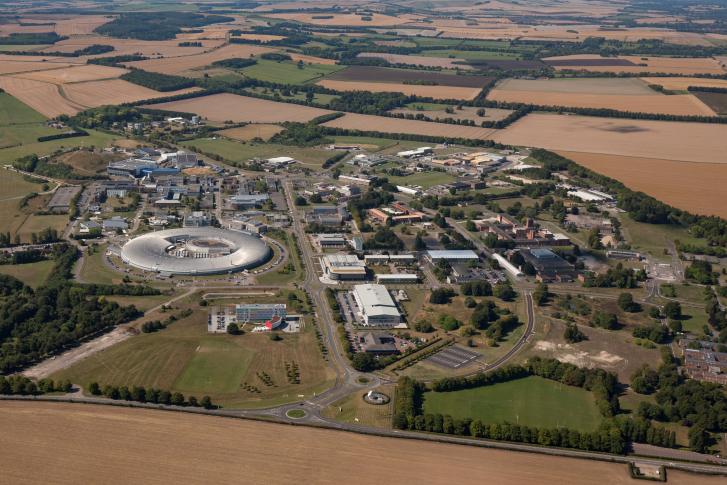
An updated report reveals that the UK’s national synchrotron facility, Diamond Light Source (based at Harwell Campus) has had a £2.6 billion impact on UK science and economy since 2007.
The impact is rooted in the delivery of almost 12,000 journal papers on findings from research carried out at Diamond. The UK taxpayer contributes only £2.45 annually towards Diamond’s world-changing science, less than the cost of a cup of coffee.
Diamond Light Source is a vast 561 metre ring-shaped facility. It harnesses the power of electrons to produce an intense beam of light that can be used to study atoms and molecules in incredibly fine detail.
The new figures on its impact are updates to the 2021 study by Technopolis, measuring Diamond’s scientific, technological, societal, and economic benefits.
Diamond Light Source is funded as a joint venture between:
- Science and Technology Facilities Council (STFC)
- Wellcome Trust, UK’s largest provider of non-governmental funding for scientific research
- 14,000-strong global user community
Isabelle Boscaro-Clarke, Head of Impact at Diamond, said: "Diamond’s mission is to keep the UK at the forefront of scientific research.
"We do this by providing our users, in academia and industry, access to our state-of-the-art facilities enabling them to fulfill their research goals across a wide variety of scientific disciplines. The figures speak for themselves.
"They demonstrate the huge array of benefits the facility has delivered, and the leading science being achieved by our 14,000-strong global user community, who are tackling some of the most challenging scientific questions of the 21st century."
Diamond is one of the most advanced scientific facilities in the world, and its pioneering capabilities are helping to keep the UK at the forefront of scientific research.
To date, Diamond has enabled ground-breaking scientific achievements, including:
- Time-critical data and resources for improved public understanding of COVID-19
- Research of a plastic-degrading enzyme
- New synthetic vaccine against the foot-and-mouth disease virus
- Thermal energy storage solutions to reduce carbon dioxide emissions and domestic fuel bills
- Improving the lifetime of engineering components like turbine blades by studying residual stress profiles
- Characterisation of energy materials and catalysts for sustainable technologies




